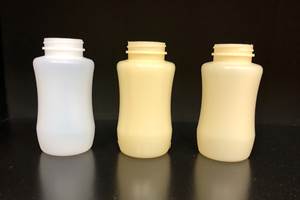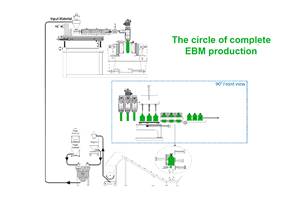Positive Signs for Appliance Production
Reshoring and an improved housing market bode well for appliances.
Appliance production contracted for a roughly six-year stretch from mid-2005 to early 2012. But since then, thanks to significant reshoring of appliance production and an improved housing market, appliances have been growing at a very significant and accelerating rate. Significant growth should continue in 2016. Let’s see why.
Real 10-Year Treasury Rate. The real (inflation-adjusted) 10-yr U.S. Treasury bond rate was 1.45% in February. This was the lowest it had been since last May, and it was the second month in a row that the real rate was below 2%. Since the Fed announced it was raising its overnight rate, the real 10-yr Treasury rate has dropped in each of the last three months. Apparently, the market does not see things the same way as the Fed. The change in the real 10-yr Treasury rate increased at a slower rate for the second consecutive month, indicating a slowing rate of increase in interest rates compared with one year ago.
While the change in the real rate increased at a slower rate, the change in the nominal rate actually went down, indicating that the nominal rate was lower than it was one year ago. The difference is inflation. The current average annual inflation rate in February was still much lower than it was a year ago.
Housing Permits. There were 83,800 housing permits filed in February. That’s up 8.1% from a year ago. This was the fourth month in a row that housing permits increased month-over-month. And the annual rate of growth accelerated for the fourth month in a row, too. The current rate of annual growth of 11.6% is the fastest since April 2014. This is a very positive sign for appliance manufacturing, since new homes demand a significant number of new appliances.
Real Appliance Spending. Consumer spending on appliances set a new all-time high in almost every single month in 2015. After a significant contraction in spending from 2007 to mid-2010, appliance spending has been growing at a very strong rate ever since. Historically, the average growth rate is 4%. But the month-over-month rate of growth has been faster than that in every month but two since January 2013.
The month-over-month growth rate in February was 7.8%, which was the fastest growth since last July. The rate of growth had accelerated since December, compared with August through November. As a result, while the annual rate of change has grown at a decelerating rate, the rate of change may be near a bottom and ready to grow faster once again.
Appliance Industrial Production. Production has been growing since May 2012. From December 2015 to February 2016, the month-over-month rate of growth in appliance production accelerated. The trends in the interest rate, housing permits, and appliance spending indicate that the annual rate of change in appliance production should begin to grow at an accelerating rate very soon.
ABOUT THE AUTHOR
Steven Kline Jr. is part of the fourth-generation ownership team of Cincinnati-based Gardner Business Media, which is the publisher of Plastics Technology. He is currently the company’s director of market intelligence. Contact: (513) 527-8800 email:skline2@gardnerweb.com
blog: gardnerweb.com/economics/blog
Related Content
How to Extrusion Blow Mold PHA/PLA Blends
You need to pay attention to the inherent characteristics of biopolymers PHA/PLA materials when setting process parameters to realize better and more consistent outcomes.
Read MoreLatest Data on Bottled Water Shows Continued Strong Growth
Bottled water’s volume surpassed soft drinks for the first time in 2016 and has done so every year since.
Read MoreFoam-Core Multilayer Blow Molding: How It’s Done
Learn here how to take advantage of new lightweighting and recycle utilization opportunities in consumer packaging, thanks to a collaboration of leaders in microcellular foaming and multilayer head design.
Read MoreGet Color Changes Right In Extrusion Blow Molding
Follow these best practices to minimize loss of time, material and labor during color changes in molding containers from bottles to jerrycans. The authors explore what this means for each step of the process, from raw-material infeed to handling and reprocessing tails and trim.
Read MoreRead Next
Beyond Prototypes: 8 Ways the Plastics Industry Is Using 3D Printing
Plastics processors are finding applications for 3D printing around the plant and across the supply chain. Here are 8 examples to look for at NPE2024.
Read MoreMaking the Circular Economy a Reality
Driven by brand owner demands and new worldwide legislation, the entire supply chain is working toward the shift to circularity, with some evidence the circular economy has already begun.
Read MoreFor PLASTICS' CEO Seaholm, NPE to Shine Light on Sustainability Successes
With advocacy, communication and sustainability as three main pillars, Seaholm leads a trade association to NPE that ‘is more active today than we have ever been.’
Read More
.JPG;width=70;height=70;mode=crop)











